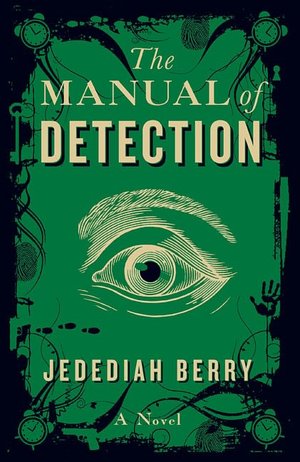 Eleven Great Crime Novel Covers
Eleven Great Crime Novel Covers
When many people think of top-quality book jackets in the crime-fiction field, their minds turn immediately to the provocatively illustrated fronts of the mid-20th century. You know, the ones by artists such as Robert McGinnis, Norman Saunders, Ernest Chiriaka, and Victor Kalin. The ones that showed men with devilry blazing in their eyes and pistols in their paws, alleyways crawling with bent-nosed thugs, and curvaceous women with impossibly long legs. The sorts of covers that novelist Max Allan Collins once said represented “a wonderful golden age where utter sleaze meets genuine artistry.”
But crime novels didn’t shed all of their cleverness and captivation with the shift from painted covers to photographic ones in the late 1960s.
Typographical innovations, graphics-editing programs, and advances in printing technology give today’s designers tools that their forerunners of 50 years ago didn’t have. Those tools alone cannot turn mediocre concepts into brilliant ones, and they don’t alter the fundamental value of these jackets. As Peter Mendelsund, the associate art director for publisher Alfred A. Knopf, puts it: “Our job is still to take a book...and make it look attractive enough that you won’t be embarrassed to be seen enjoying it on a subway.” However, with the right mix of creative knack, eye for commercial appeal, and talent for pushing extraordinary ideas past dubious marketing departments, designers can still deliver eye-catching covers.
Glenn O’Neill, the deputy art director at Random House UK, isn’t pleased with the modern tendency of publishers to offer books that resemble one another, right down to their use of stock agency photos and shadowy, running figures. “When the exact same images duplicate on books,” he says, “it may well suggest the writing is also inter- changeable, [it’s] therefore a bad thing.”
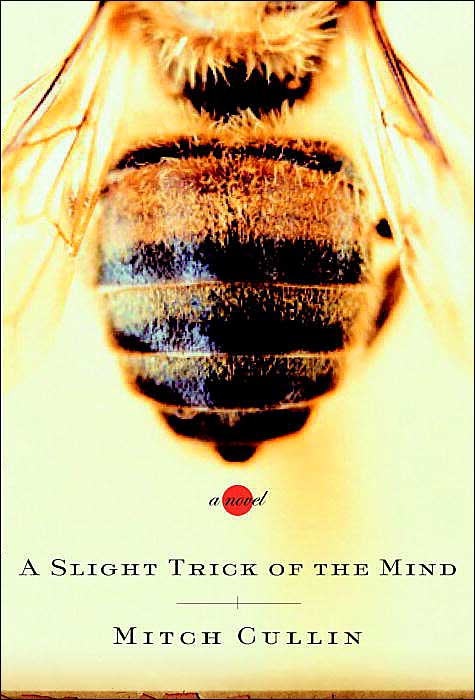 It’s unlikely O’Neill would be accused of wielding a cookie cutter in his cover scheme for the hardback edition of Jedediah Berry’s The Manual of Detection (2009). With its illustration of a human eye (evoking the classic Pinkerton National Detective Agency logo), surrounded by graphical elements (clocks, old-fashioned keys, fingerprints, etc.) that he says were “inspired by American noir but with a surreal twist,” Manual was among a flurry of recent books to have its artwork printed directly on the board binding, rather on a slick dust jacket. Such a “naked cover” gave Berry’s otherworldly story—about a reluctant detective pursuing his inaugural investigation with help from a highly flawed handbook—a distinctive character in both appearance and feel.
It’s unlikely O’Neill would be accused of wielding a cookie cutter in his cover scheme for the hardback edition of Jedediah Berry’s The Manual of Detection (2009). With its illustration of a human eye (evoking the classic Pinkerton National Detective Agency logo), surrounded by graphical elements (clocks, old-fashioned keys, fingerprints, etc.) that he says were “inspired by American noir but with a surreal twist,” Manual was among a flurry of recent books to have its artwork printed directly on the board binding, rather on a slick dust jacket. Such a “naked cover” gave Berry’s otherworldly story—about a reluctant detective pursuing his inaugural investigation with help from a highly flawed handbook—a distinctive character in both appearance and feel.
“The intention behind the design,” O’Neill explains, “particularly the scraperboard eye motif [commissioned from the illustrator Bill Sanderson], was to imply mystery but also a disquieting sense that ‘something is wrong here.’... It would be disingenuous, however, not to acknowledge that the jacket is meant to suggest the actual green detective manual referred to within the book; but it’s been developed into, I hope, a more desirable object, with gold and black foil to embellish.”
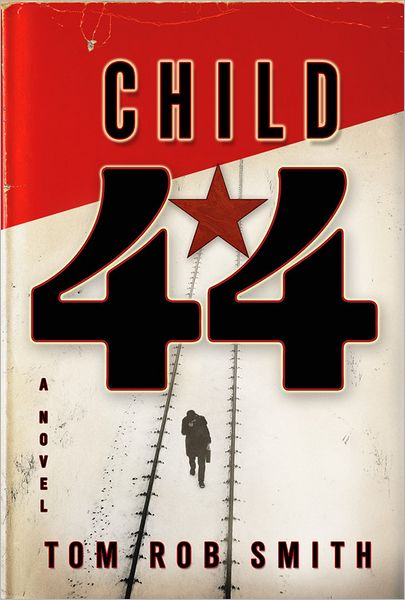 Of course, a crime novel front doesn’t require such intricate details to be arresting. Consider Mitch Cullin’s A Slight Trick of the Mind (2005), which finds a frail 93-year-old Sherlock Holmes living in post-World War II Sussex, keeping bees and struggling with his declining faculties, as he reminisces about the long-ago case of an oft-disappearing wife. That book’s face, created for Doubleday by Michael J. Windsor, featured rather delicate title type and below that, what looked like the crumbling edges of old paper. But it was the central image that caught one’s eye: the close-up of a bee’s posterior, hinting at Holmes’ apiarian pastime.
Of course, a crime novel front doesn’t require such intricate details to be arresting. Consider Mitch Cullin’s A Slight Trick of the Mind (2005), which finds a frail 93-year-old Sherlock Holmes living in post-World War II Sussex, keeping bees and struggling with his declining faculties, as he reminisces about the long-ago case of an oft-disappearing wife. That book’s face, created for Doubleday by Michael J. Windsor, featured rather delicate title type and below that, what looked like the crumbling edges of old paper. But it was the central image that caught one’s eye: the close-up of a bee’s posterior, hinting at Holmes’ apiarian pastime.
Similarly, it was the pronounced imagery on the cover of Tom Rob Smith’s first novel, Child 44 (2008)—conceived for Grand Central Publishing by Anne Twomey—that made it so striking. The sharp contrast between the red field at the top, the embossed and white-shadowed title, and the black-and-white composite image at the bottom of a man following silent railroad tracks combined in an elegant reflection of Smith’s bleak and startling thriller, set in the Soviet Union during the mid-20th century.
 And Will Staehle’s design for Twelve/Hatchette of The Sherlockian (2010), a debut work by Graham Moore, spoke boldly in the genre’s most iconic language. To introduce this yarn about a modern search for Arthur Conan Doyle’s missing diary and a parallel probe, by Holmes’ creator himself, into the deaths of three suffragettes in 1900, Staehle gave us an immediate reference to Holmes in the use of a pipe, upended like a question mark, with a splotch of blood for the dot. That spot was actually a cut-out in the jacket, exposing part of a scarlet profile of Holmes on the board behind.
And Will Staehle’s design for Twelve/Hatchette of The Sherlockian (2010), a debut work by Graham Moore, spoke boldly in the genre’s most iconic language. To introduce this yarn about a modern search for Arthur Conan Doyle’s missing diary and a parallel probe, by Holmes’ creator himself, into the deaths of three suffragettes in 1900, Staehle gave us an immediate reference to Holmes in the use of a pipe, upended like a question mark, with a splotch of blood for the dot. That spot was actually a cut-out in the jacket, exposing part of a scarlet profile of Holmes on the board behind.
Inventive employment of typefaces exert their own power and appeal. When she was looking for typographical solutions to the front of George Dawes Green’s Ravens (2009), Diane Luger, executive art director at Grand Central Publishing, says she “noticed that the ‘V’ letterform [in the book’s title] took on the shape of a raven in flight, and we moved forward from there. We looked at overlaying the title treatment over a photograph of a suburban street scene, to tell more of a story—but it lost its impact, proving that less is more.” The severe black-and-white result serves well Green’s chilling, twisted tale about drifters hoping to bilk a rural Georgia family of their lottery winnings.
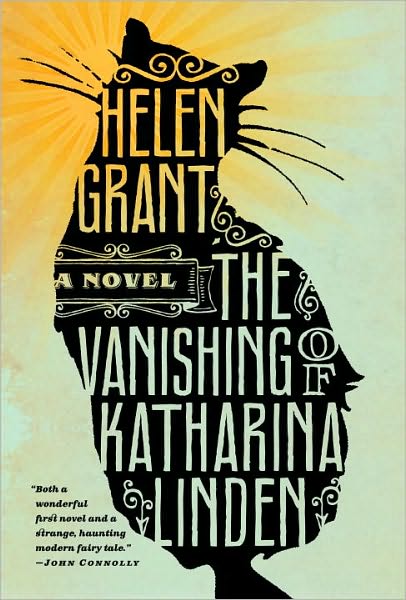 Roberto de Vicq de Cumptich’s design for the hardcover jacket of Delacorte’s The Vanishing of Katharina Linden (2010), by UK-born Belgian author Helen Grant, could easily have slipped from clever to gimmicky, but it did not. The silhouette of a cat, filled with heavily vertical title type, nicely embodied this haunting story about an 11-year-old girl whose classmate vanishes from a Grimm’s fairy tale-themed parade float, provoking talk of the supernatural and witches assuming feline form.
Roberto de Vicq de Cumptich’s design for the hardcover jacket of Delacorte’s The Vanishing of Katharina Linden (2010), by UK-born Belgian author Helen Grant, could easily have slipped from clever to gimmicky, but it did not. The silhouette of a cat, filled with heavily vertical title type, nicely embodied this haunting story about an 11-year-old girl whose classmate vanishes from a Grimm’s fairy tale-themed parade float, provoking talk of the supernatural and witches assuming feline form.
One couldn’t help being drawn, as well, to the wrapper on Viking’s Faithful Place (2010), Irish author Tana French’s third novel. Designed by Jen Wang, with artwork by Viktor Koen, this front combined the likeness of an old, overgrown building wall with lettering broken and obscured by peeling paint. The results seemed almost too soothing to represent this mystery about forbidden love, sibling rivalries, and sins of the fathers being visited upon the next generation. Yet the neglect shown toward that wall echoed the familial fractures teased open in French’s narrative.
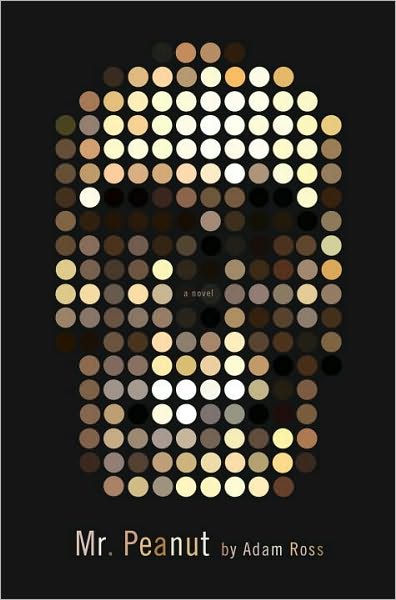 With so many crime novels demanding reader attention in bookstores, it’s not enough anymore for covers to simply be different; they have to look “wicked cool and awesome,” as Knopf art director Mendelsund jokes. He has a reputation for delivering such work. Mendelsund created the swirling fronts for the first two US releases of Stieg Larsson’s thrillers, as well as the less-subtle, silver-metalized jacket for the third book—all great departures from the European covers with their sexy women and dragon-shaped tattoos. He was also responsible for the eerie skull-in-dots jacket on Adam Ross’ Mr. Peanut (2010), the poignant story of a man obsessed with his wife’s demise.
With so many crime novels demanding reader attention in bookstores, it’s not enough anymore for covers to simply be different; they have to look “wicked cool and awesome,” as Knopf art director Mendelsund jokes. He has a reputation for delivering such work. Mendelsund created the swirling fronts for the first two US releases of Stieg Larsson’s thrillers, as well as the less-subtle, silver-metalized jacket for the third book—all great departures from the European covers with their sexy women and dragon-shaped tattoos. He was also responsible for the eerie skull-in-dots jacket on Adam Ross’ Mr. Peanut (2010), the poignant story of a man obsessed with his wife’s demise.
However, Mendelsund’s predilection for novelty may have been demonstrated best in his work on Joe R. Lansdale’s Leather Maiden (2008). Lansdale’s tale focuses on a scandalized journalist who returns to his small Texas hometown and cracks a bad can of worms by digging into a cold-case murder. “That book has almost a horror kind of feel to it,” says Mendelsund, so he developed a black-and-white photo cover showing a woman’s upreaching hand and a small title card stapled to her palm. The only color is a bit of crimson around that staple. Although Mendelsund expected resistance to his concept from Knopf’s marketing minions, “the only feedback I got was that we should give the image a manicure,” which he accomplished with Photoshop.
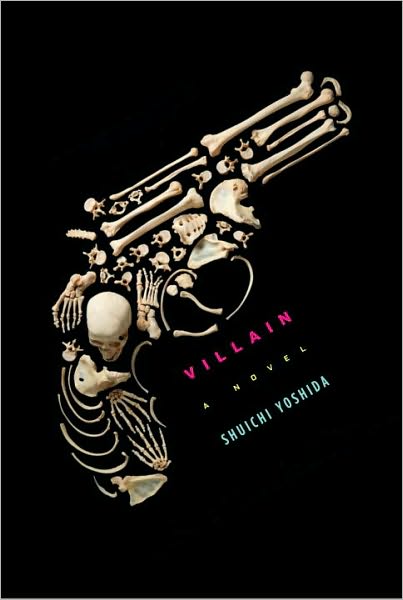 “Different” would also describe the wraparound on Japanese author Shuichi Yoshida’s Villain (2010). To attract readers to this gritty story about a young insurance saleswoman’s strangulation, Mendelsund’s colleague at Knopf, Chip Kidd, gave us the illustration of a handgun shaped from the major bones of the human body—an image that looks like something from a voodoo ceremony, something taboo. Again, there’s minimal color, and the understated headline type lets this “bone gun” take center stage.
“Different” would also describe the wraparound on Japanese author Shuichi Yoshida’s Villain (2010). To attract readers to this gritty story about a young insurance saleswoman’s strangulation, Mendelsund’s colleague at Knopf, Chip Kidd, gave us the illustration of a handgun shaped from the major bones of the human body—an image that looks like something from a voodoo ceremony, something taboo. Again, there’s minimal color, and the understated headline type lets this “bone gun” take center stage.
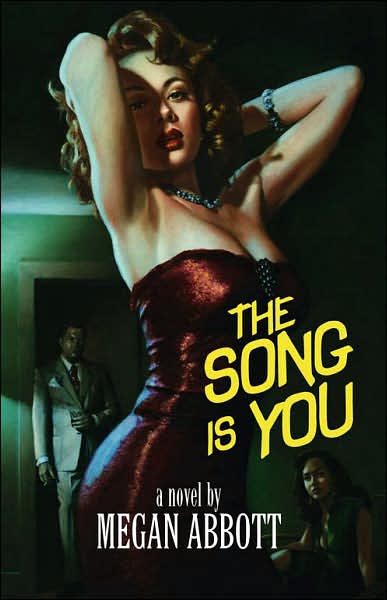 Curiously, some of the most distinctive covers on shelves these days don’t look new at all. The seductive woman that Richie Fahey painted for the front of Megan Abbott’s 2007 Simon & Schuster release, The Song Is You, based on a true-life missing person case from Los Angeles in 1949, could have fit just as well on a Gold Medal paperback crime novel from the Eisenhower era.
Curiously, some of the most distinctive covers on shelves these days don’t look new at all. The seductive woman that Richie Fahey painted for the front of Megan Abbott’s 2007 Simon & Schuster release, The Song Is You, based on a true-life missing person case from Los Angeles in 1949, could have fit just as well on a Gold Medal paperback crime novel from the Eisenhower era.
Back then, though, the illustration would also have featured a gun. And you would have seen the woman’s legs. They would have been spectacular.
J. Kingston Pierce is the editor of The Rap Sheet and the senior editor of January Magazine.
This article first appeared in Mystery Scene Winter Issue #118.
 As the author of The California Roll, a novel about con artists, I often hear people boast that they’d never fall for the scams I describe. They are, they insist, too smart, too savvy, or just too damn pretty to get duped. Maybe. But the thing about con artists is, if they hit you when your guard is down, you might not be quite as smart, savvy, or pretty as you think.
As the author of The California Roll, a novel about con artists, I often hear people boast that they’d never fall for the scams I describe. They are, they insist, too smart, too savvy, or just too damn pretty to get duped. Maybe. But the thing about con artists is, if they hit you when your guard is down, you might not be quite as smart, savvy, or pretty as you think.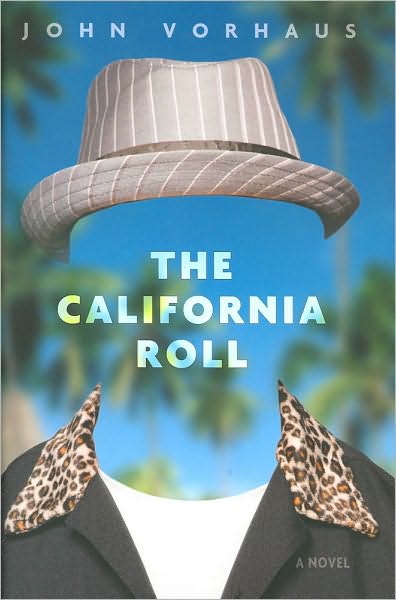 Then, suddenly, I get it. I’m being pigeon dropped! Right here in Red Square! Me, the author of The California Roll! I literally wrote the book on scams, and they’re trying to hustle me in the classic manner of putting free money in my path and then using my own greed, fear, or innocence to strip-mine my wallet. Well, this just infuriates me. Cranking my dudgeon up to full high, I tell the guy with the badge, “You’re not a cop! You’re not a cop!” and quickly walk away.
Then, suddenly, I get it. I’m being pigeon dropped! Right here in Red Square! Me, the author of The California Roll! I literally wrote the book on scams, and they’re trying to hustle me in the classic manner of putting free money in my path and then using my own greed, fear, or innocence to strip-mine my wallet. Well, this just infuriates me. Cranking my dudgeon up to full high, I tell the guy with the badge, “You’re not a cop! You’re not a cop!” and quickly walk away.
 Writing helps me figure out what I think and feel, and it helps me blow off steam when I’m frustrated.
Writing helps me figure out what I think and feel, and it helps me blow off steam when I’m frustrated.
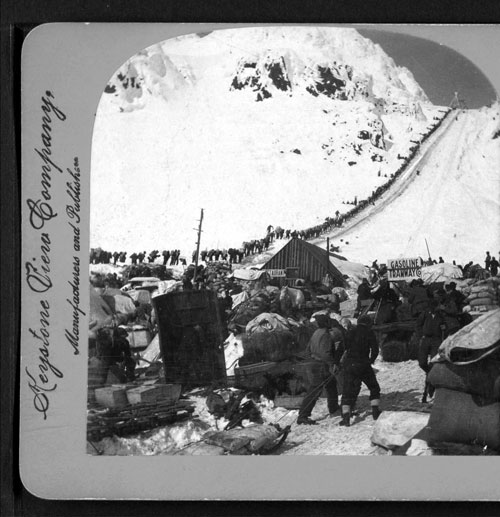 The late Sir Peter Ustinov once said that Toronto was New York run by the Swiss. I like to say that Dawson, Yukon, in 1898, was Dodge City run by the the Mounties.
The late Sir Peter Ustinov once said that Toronto was New York run by the Swiss. I like to say that Dawson, Yukon, in 1898, was Dodge City run by the the Mounties.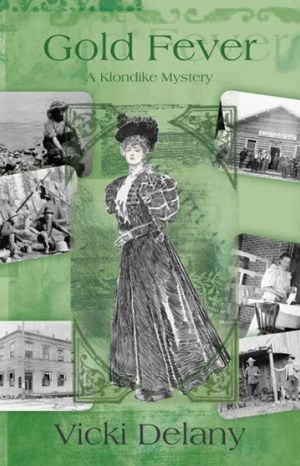
 I never thought I’d write The Book of Spies, my new espionage thriller. In fact, it made no sense to write it. I was crazy to write it.
I never thought I’d write The Book of Spies, my new espionage thriller. In fact, it made no sense to write it. I was crazy to write it.
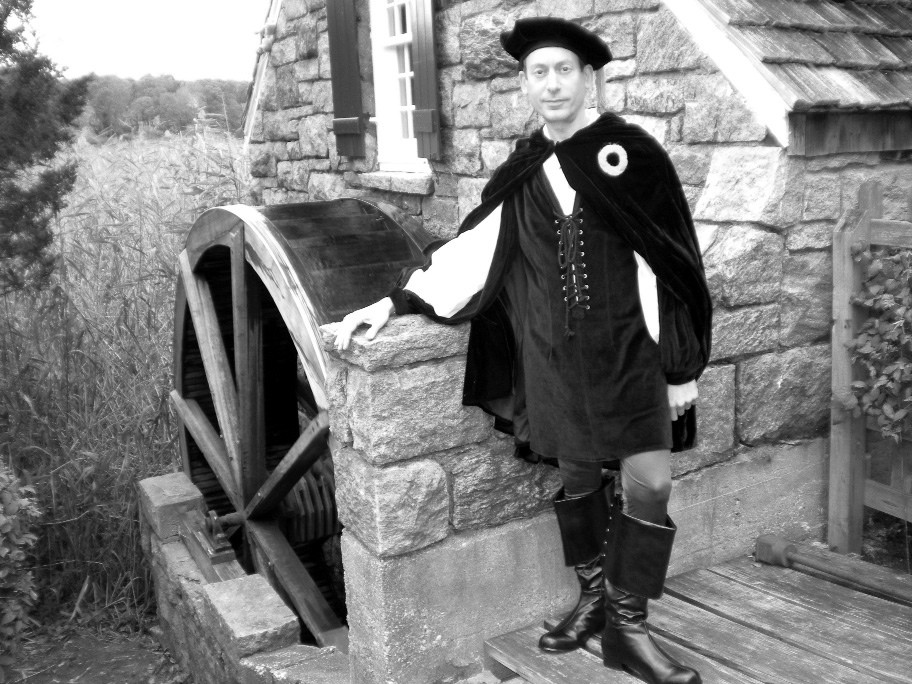 I was born on a hot August night back when fathers weren’t allowed in the delivery room. They were expected to spend hours pacing around the waiting room while chain-smoking cigarettes. My father found a mystery novel lying on a table and began reading, and several hours later, when the doctor returned to tell him that his wife had given birth and he could go in to see her, my father replied, “Hold on, there are only twenty pages left and I’ve got to find out whodunit.” So you see that I was destined to become a mystery writer.
I was born on a hot August night back when fathers weren’t allowed in the delivery room. They were expected to spend hours pacing around the waiting room while chain-smoking cigarettes. My father found a mystery novel lying on a table and began reading, and several hours later, when the doctor returned to tell him that his wife had given birth and he could go in to see her, my father replied, “Hold on, there are only twenty pages left and I’ve got to find out whodunit.” So you see that I was destined to become a mystery writer.
 It was a wastewater treatment plant that finally got me.
It was a wastewater treatment plant that finally got me. Definitely not.
Definitely not.
 Books burn in the opening scene of my fourth and latest Lake District Mystery, The Serpent Pool. And the man who owns the books, an avid collector called George Saffell, watches bound and helpless as the flames race toward him.
Books burn in the opening scene of my fourth and latest Lake District Mystery, The Serpent Pool. And the man who owns the books, an avid collector called George Saffell, watches bound and helpless as the flames race toward him.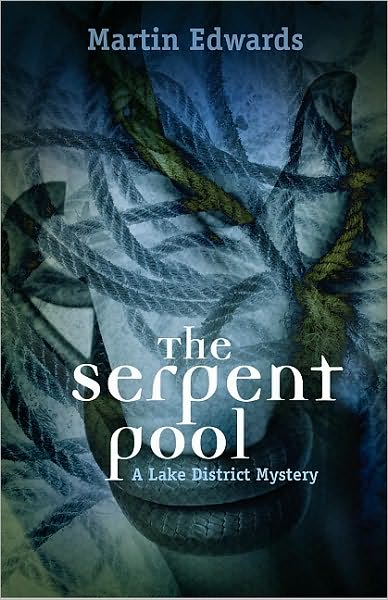
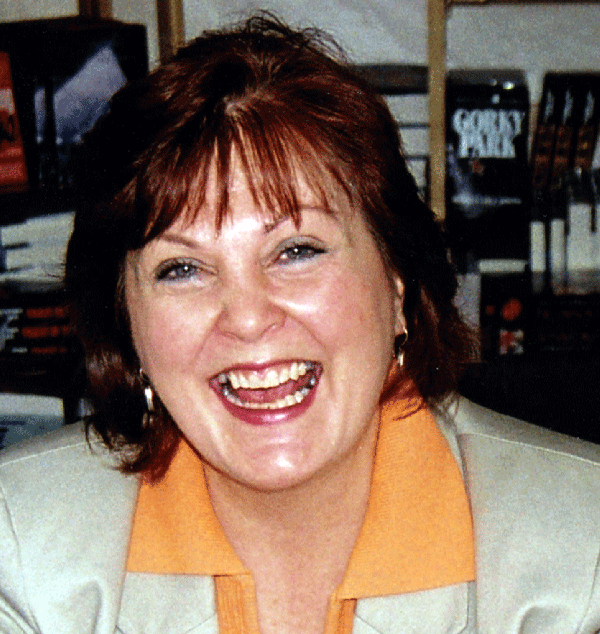 One of my fantasies has always been to inherit an old wreck of a house stuffed to the rafters with what others might describe as “junk,” but which I’d consider “treasures.”
One of my fantasies has always been to inherit an old wreck of a house stuffed to the rafters with what others might describe as “junk,” but which I’d consider “treasures.”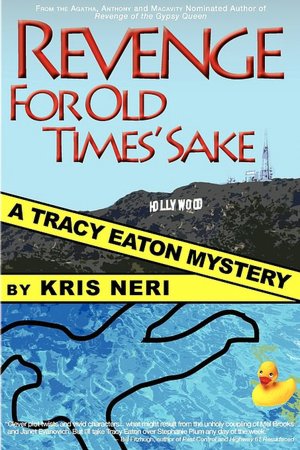
 "It was raw, it was lovely, it was monstrous and frightening and made you catch your breath when you looked at it. It was San Francisco in 1940."
"It was raw, it was lovely, it was monstrous and frightening and made you catch your breath when you looked at it. It was San Francisco in 1940."
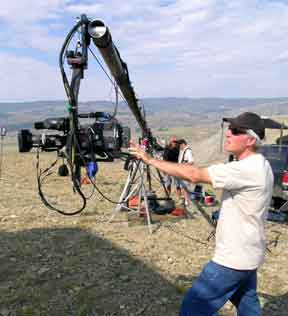 When I was writing Drink the Tea, my debut novel about a scam artist turned PI, I was fortunate to have shot and directed episodes of The Prosecutors for the Discovery Channel. By working on this series, as well as The New Detectives and The FBI Files, I spent lots of time with cops and heard some great stories. I used a lot of this material in Drink the Tea. I also heard stories that I haven’t been able to find a place for—yet. This story is one of them.
When I was writing Drink the Tea, my debut novel about a scam artist turned PI, I was fortunate to have shot and directed episodes of The Prosecutors for the Discovery Channel. By working on this series, as well as The New Detectives and The FBI Files, I spent lots of time with cops and heard some great stories. I used a lot of this material in Drink the Tea. I also heard stories that I haven’t been able to find a place for—yet. This story is one of them.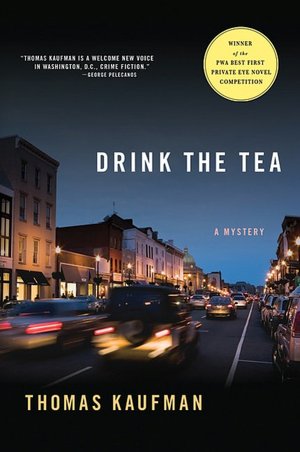
 My husband Charlie, a retired pathologist, is a ghoul. On an airplane from Luxor to Cairo, Egypt, I told him I had a new plot for an archaeological mystery, The House of the Sphinx. He listened to my ideas for skullduggery set in the Temple of Luxor and the fabulous site of Karnak. “Fine,” he said. “But what about adding a little bioterrorism?”
My husband Charlie, a retired pathologist, is a ghoul. On an airplane from Luxor to Cairo, Egypt, I told him I had a new plot for an archaeological mystery, The House of the Sphinx. He listened to my ideas for skullduggery set in the Temple of Luxor and the fabulous site of Karnak. “Fine,” he said. “But what about adding a little bioterrorism?”








 The best damn private eye on television?
The best damn private eye on television?
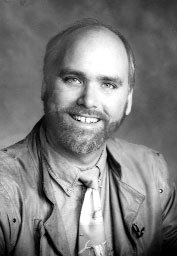 “Calista Marley has been pregnant for 12 years,” says Bill Pomidor.
“Calista Marley has been pregnant for 12 years,” says Bill Pomidor.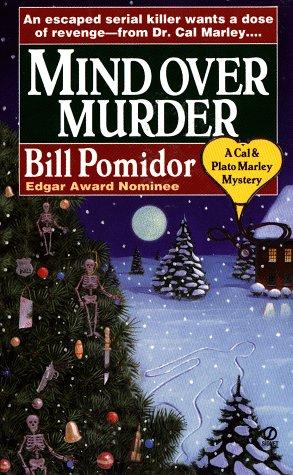
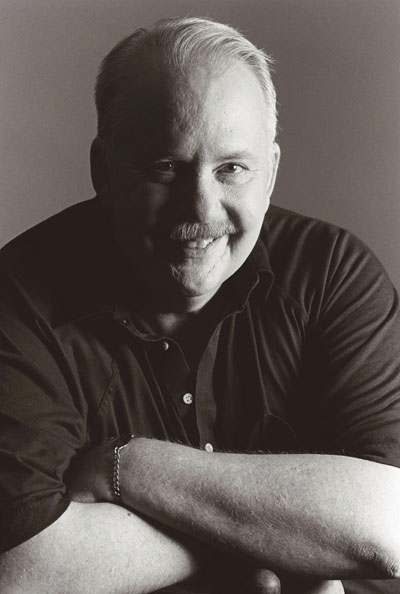 So far Donald Harstad has published five books about Carl Houseman, a good-natured, buffet-loving deputy sheriff in fictional Nation County, Iowa. Houseman’s talents for observation, deduction, and getting along with people have made him the senior investigator in the department, and the no-nonsense approach he and his colleague Hester Gorse—“I wanted to make it clear that no one was going to have fun with this woman, ever,” says Harstad of the name—bring to investigating both the mundane and the outré crimes they face made the series a popular one with readers.
So far Donald Harstad has published five books about Carl Houseman, a good-natured, buffet-loving deputy sheriff in fictional Nation County, Iowa. Houseman’s talents for observation, deduction, and getting along with people have made him the senior investigator in the department, and the no-nonsense approach he and his colleague Hester Gorse—“I wanted to make it clear that no one was going to have fun with this woman, ever,” says Harstad of the name—bring to investigating both the mundane and the outré crimes they face made the series a popular one with readers.
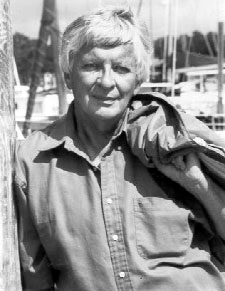 A New Prophecy
A New Prophecy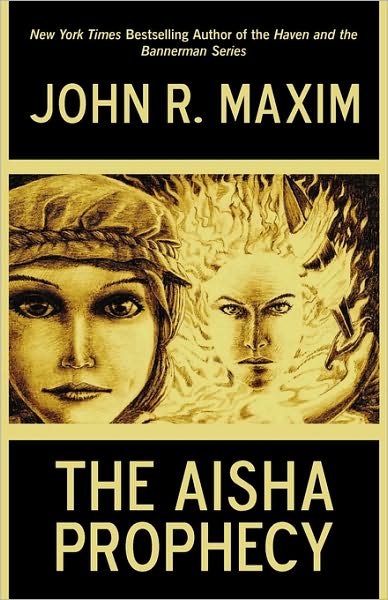
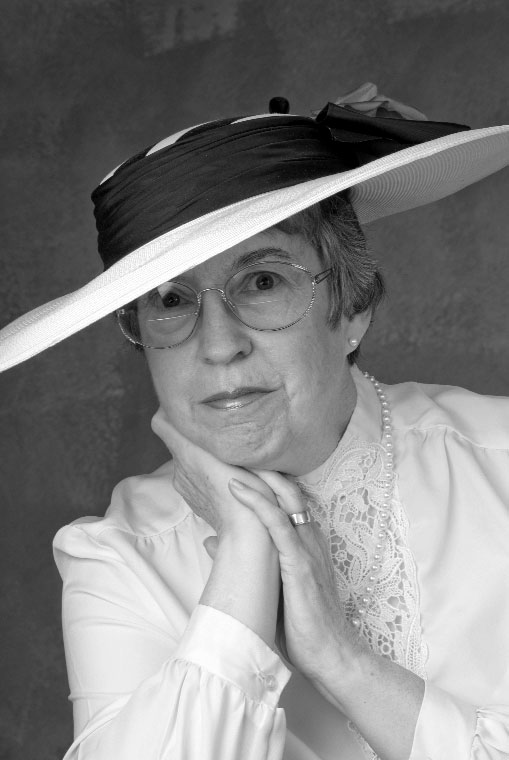 A Dark and Stormy Beginning
A Dark and Stormy Beginning
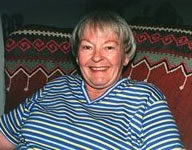 “I had always said that when I retired I was going to write, and when my 50th birthday was coming around I said to myself, ‘If you’re ever going to do this, now is the time.’”
“I had always said that when I retired I was going to write, and when my 50th birthday was coming around I said to myself, ‘If you’re ever going to do this, now is the time.’”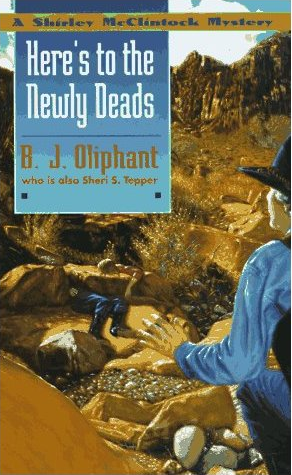
 When Jerome Doolittle was conceiving the character of Tom Bethany, he knew he wanted a tough loner. But he wanted to avoid a problem he’d seen in Raymond Chandler’s work.
When Jerome Doolittle was conceiving the character of Tom Bethany, he knew he wanted a tough loner. But he wanted to avoid a problem he’d seen in Raymond Chandler’s work.
 Good news for Abigail Padgett fans! After several years without a new book, the author of the Bo Bradley and the Blue McCarron series
Good news for Abigail Padgett fans! After several years without a new book, the author of the Bo Bradley and the Blue McCarron series 
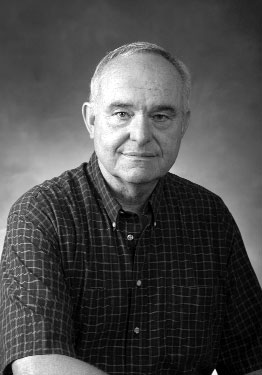 “My initial goal was to have a good time, and to enjoy the experience. Writing has always been fun for me. Writing is in fact a form of entertainment for me—although I would stop short of calling it self-indulgent.”
“My initial goal was to have a good time, and to enjoy the experience. Writing has always been fun for me. Writing is in fact a form of entertainment for me—although I would stop short of calling it self-indulgent.”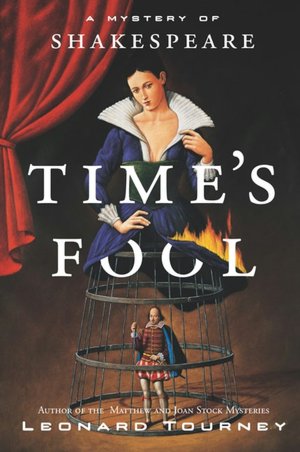
 For the past four years, Randy Wayne White, author of the
For the past four years, Randy Wayne White, author of the 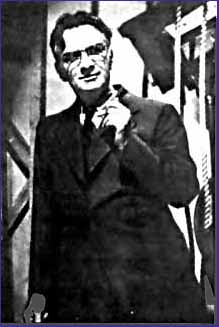 Judging from the start I have on mysteries that will be published this year, 2012 is shaping up to be a very good year indeed.
Judging from the start I have on mysteries that will be published this year, 2012 is shaping up to be a very good year indeed.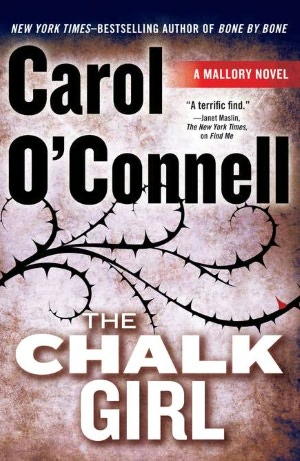 Kathy Mallory returns after a long absence in The Chalk Girl, the 10th novel in this series.
Kathy Mallory returns after a long absence in The Chalk Girl, the 10th novel in this series.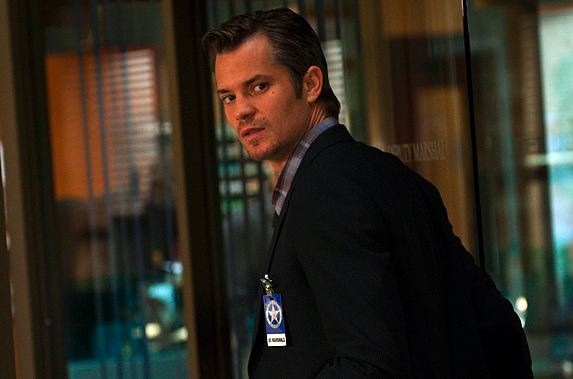
 But Boyd and his crew will not be the only ones making a play to rule the Harlan underworld. Givens will be up against dirty politicians, hidden fortunes, a mysterious man named “Limehouse” and an enterprising and lethal criminal from the Motor City.
But Boyd and his crew will not be the only ones making a play to rule the Harlan underworld. Givens will be up against dirty politicians, hidden fortunes, a mysterious man named “Limehouse” and an enterprising and lethal criminal from the Motor City.
